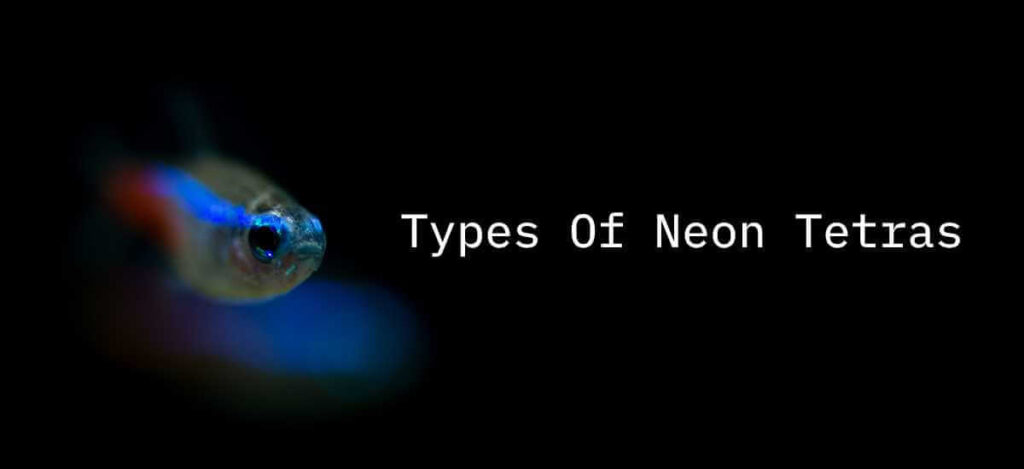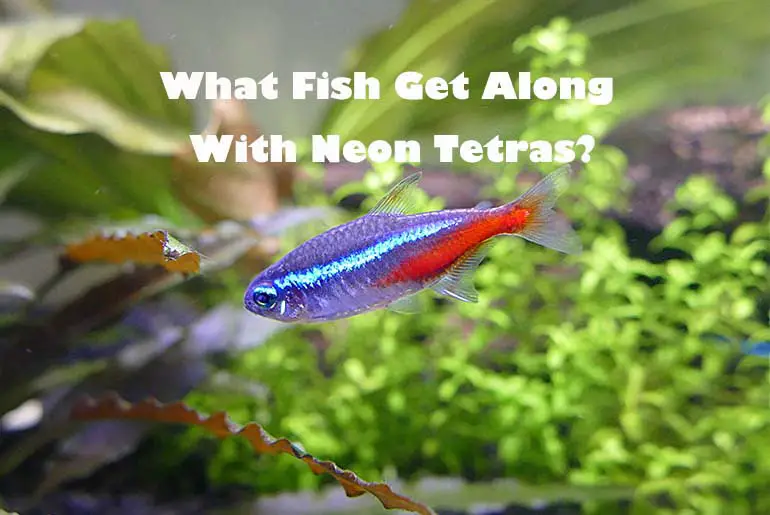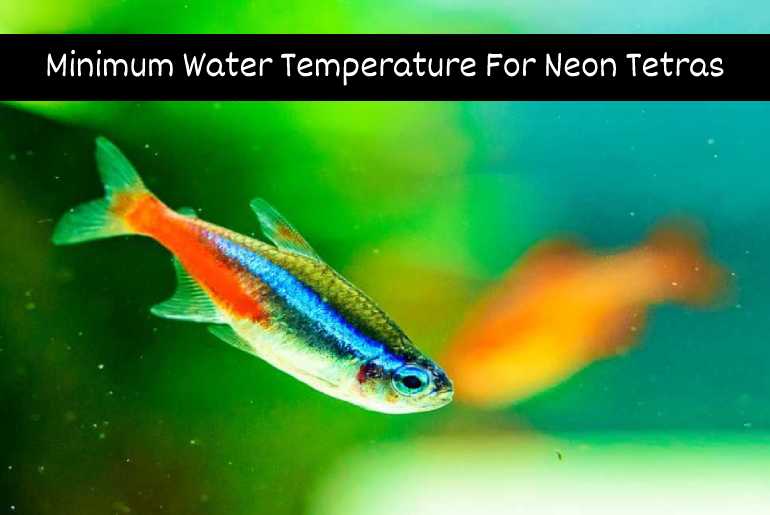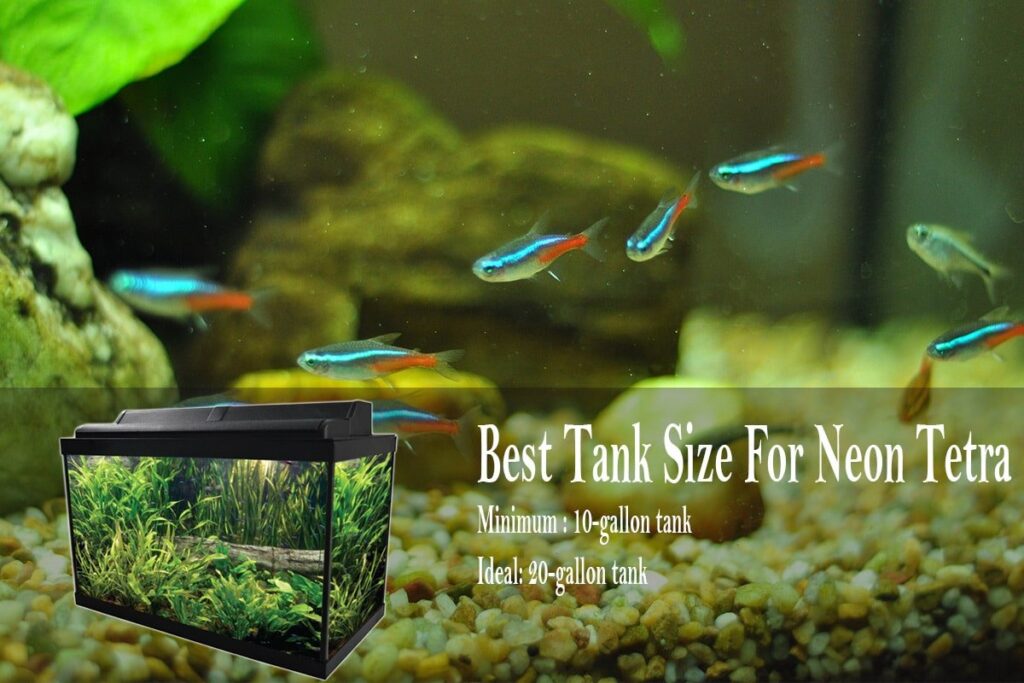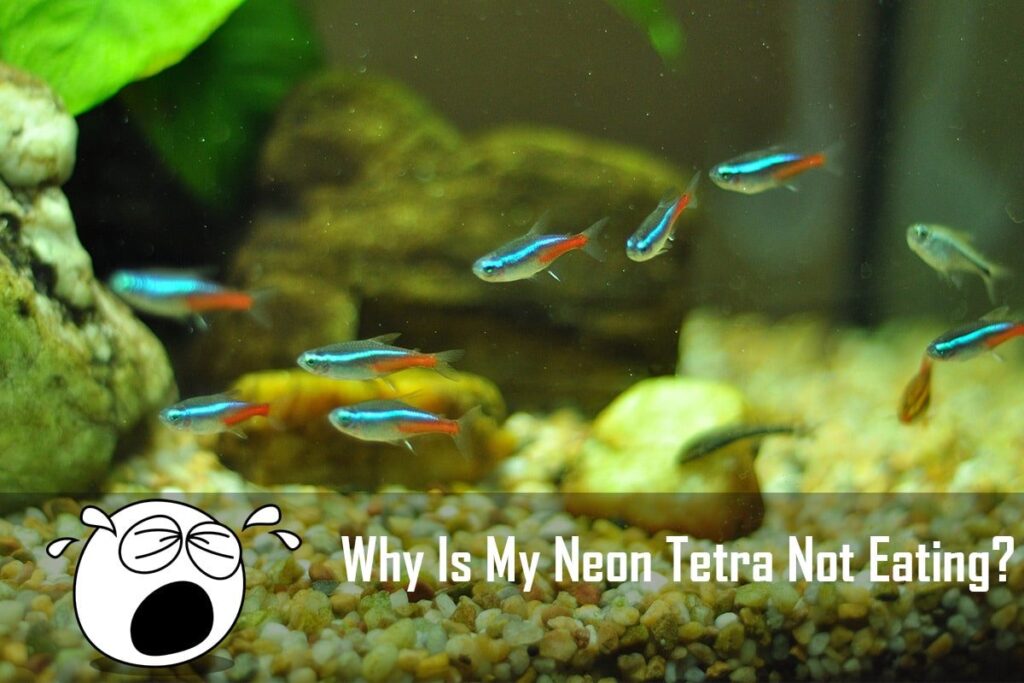When I was seven, I was awestruck by tiny little fish that had a color combination of red, blue, and shiny silver on their body. I had seen plenty of them in a large aquarium in a fish shop near my home. I learned from my parents that it was called Neon Tetra. Since then, I have wanted to keep them at home. Later I came to know, there are different types of Neon Tetras. They represented how lively the underwater world was, similar to what I had seen on the television. They are so beautiful! No wonder, they are called “jewels of the aquarium”.
Neon Tetras are small, colorful, and beautiful fish that are kept by many people. They are schooling fish and can easily live in community aquariums. They are peaceful omnivores. Many people keep neon tetras as their hobby and also for selling purposes. We can find different types of Neon Tetras in aquarium worldwide. In this article, I will provide you details on Neon Tetras and their types, also I will answer some frequently asked questions.
Introduction To Neon Tetras
Neon Tetras are natives of South America. They are found in clear water and black water streams in the Amazon Basins of South America (eastern Peru, western Brazil, and southeastern Columbia). They belong to a family of characids or characins. Characids is a family of tropical and freshwater subtropical fish.
Neon Tetras were discovered in 1934. When they were discovered, they were in wild form, now various other types of Neon Tetras are found which are their captive variety. Since their origin is in blackwater, Neon Tetras are colorful to make themselves visible, nature is amazing, isn’t it?
Neon Tetras are shoaling fish and they should be kept in groups of their own. Not having more number of friends, often stresses them out which can result in aggression and biting others. We should keep a minimum of six neon tetras together. Since they are small fish, they do not even require a large aquarium, they can be reared with 10 gallons (minimum) tank. But, their beauty is much reflected in large aquariums.
Also Read:
How Many Neon Tetras in a 10-gallon tank,
Are Tetras Schooling Fish? – Easy Schooling Fish
Fun fact: Do you know the bright colors of Neon Tetras fade away? Well, under certain conditions the colors of neon tetras turn dim:
- At night
- When they sense danger
- When they are sick
Tip: when you buy Neon Tetras make sure they are robustly colored, faded color may be symptoms of an ill-health of Neon Tetras
Read Full Article on Neon Tetra: A Complete Care Guide For Beginners
Types Of Neon Tetras
Apart from red, blue, and silver bodied neon tetras,(the first fish that fascinated me), there are a lot more types of neon tetras. Did you know that? Some of the common Neon Tetras are:
- True Neon Tetras
- Long Fins Neon Tetras
- Gold Head Neon Tetras
- Diamond Neon Tetras
- Black Neon Tetra
- Red Neon Tetra
- Green Tetra
Now, let’s know about them in brief:
True Neon Tetras (Paracheirodon innesi)
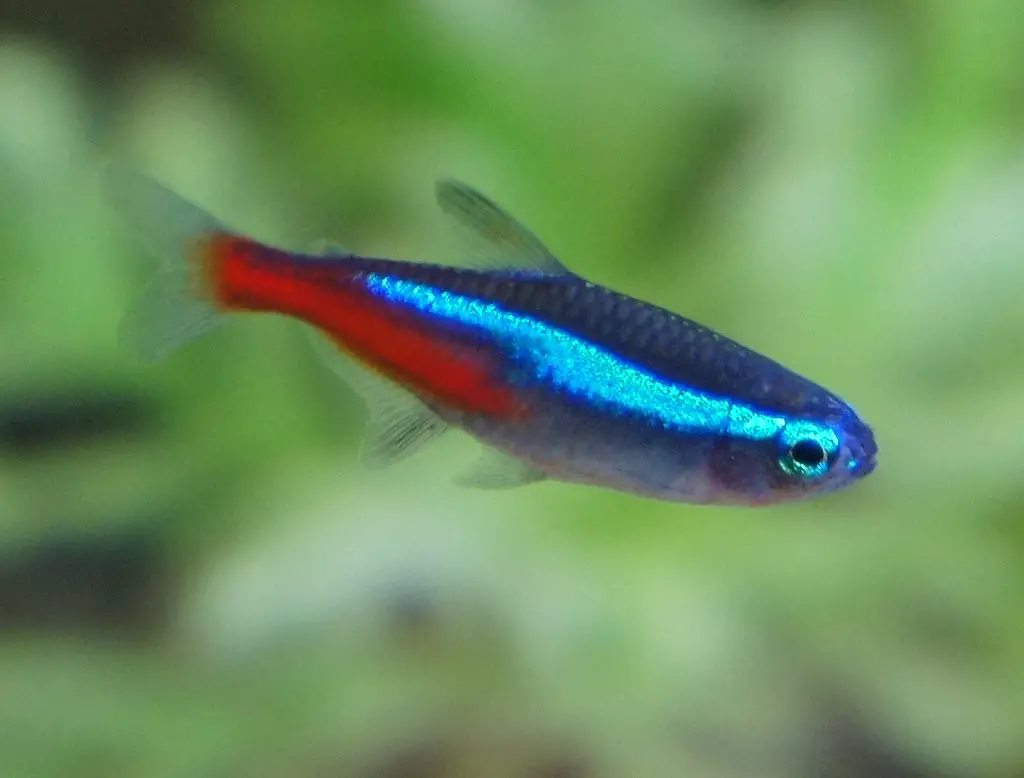
True or “wild forms” of Neon Tetras have distinctive blue and red and silver-white color. From their eyes to their adipose fin they have bright blue color on both sides. Also, from anal fin to tail, they have red color (i.e the red color on their body begins only from their mid-body). Their fins and tails both are transparent. Wild forms of True Neon Tetras have a silver-white abdomen and grow on an average of 1.2 inches.
These small fish are non-aggressive, social fish, and should be kept in a school of at least 6 other true neon tetras. They usually swim in the middle level of tanks.
Related Article:
Are Tetras Fin Nippers? Are They Aggressive?,
Neon Tetra Behavior: Are They Aggressive/Fighting or Playing?
Neon Tetras live from 5 to 10 years. The minimum aquarium size for them is 10-gallon. Experts recommend a temperature of 20℃-26℃.Suitable pH range for true neon tetras is: 5.0 – 7.0 and dH range is: 1 – 2. They are omnivores and eat larvae, algae, crustaceans, small worms, small granules, etc.
True Neon Tetras cost $1-$2.
Long Fin Neon Tetras (Paracheirodon innesi)(captive variety)
The physique and appearance of longfin Neon Tetra are similar to true neon tetras except it has long fins. The length of their fins is almost twice as of true neon tetras.
The physique, lifespan, and suitable environment for longfin neon tetras are similar to that of true neon tetra.
Gold Neon Tetra (Glowlight Neon Tetra)( Hemigrammus erythrozonus)
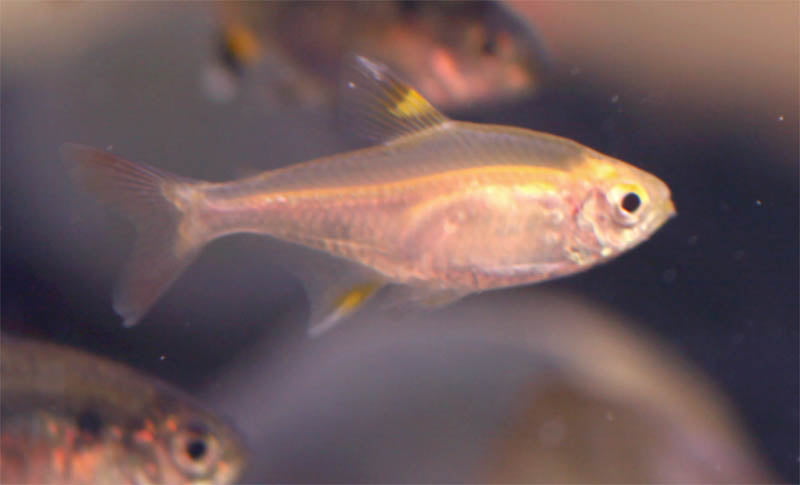
Gold Neon Tetras have a color combination of red and silver in their body. They have sticking blue colored eyes. They are leucistic. Their body is translucent and silvery peach colored. It has a red-gold line in its body that runs from its snout to its tail. Their edge of the dorsal fin has the same red color whereas the edge of the anal and pelvic fins are white. They grow up to 1.6 inches.
Gold Neon Tetras are peaceful and easy to keep. They can go well with other colorful neon tetras, cory catfish, or some barbs and danios. At least 6 gold neon tetras are ideal to keep.
Gold Neon Tetra has a lifespan of 5 years. They are omnivores and need a pH of 5.8 to 7.5. We can keep them in a rectangular tank with 15 gallons of water or more. They survive in temperatures of 24-28℃. Gold Neon Tetra do not eat food that is at the bottom, they eat flakes, frozen foods in addition to the live food. They should be fed in small quantities but frequently.
They cost around $2-$3 per fish.
Diamond Head Tetra (Moenkhausia pittieri)
Diamond Head Tetras have a diamond-shaped patch on their back, between their eyes, and a dorsal fin that has been developed through selective breeding. Most people buy fish when they are small, they tend to buy attractive colors of baby fish. Diamond head tetras have bland color when they are small, so fish keepers often neglect them. But, as these fish grow, they have a stunning appearance with their shimmery body. This species of tetra has horizontal blue and red stripes down its body. They can grow up to 2.5 inches.
Diamond Head Tetra require moderate care and have a peaceful temperament. Since they are mid-level and top-level swimming fish, we should use taller plants in the aquarium. We can keep them in the school of 6 or more.
Diamond head tetras eat micro pellet food, small shrimps, high-quality flake food, and freeze-dried blood worms. They normally live in temperatures of 20-26℃ and pH 4-8. They need a minimum tank size of 10 gallons.
The cost of this fish varies according to the geographical locations, it ranges from $2-$8.
Have you ever faced problems like lost fish fins?
Well, I would like to share my experience here. When I was new to fishkeeping, I had seen some of my tetras had lost their fins. Initially, I thought other tetras bit them, but later I came to know that was because of the cold temperature of my aquarium! I had not used the heater then. Tetras are tropical fish and they cannot live in cold environments. So here is a tip, check your temperature, special in winters, and use heaters inside the aquarium to keep your fish healthy.
Black Neon Tetra (Hyphessobrycon herbertaxelrodi)

Black Neon Tetras are sometimes referred to as black neons only. People prefer this fish for its hardiness, it can adapt to a lot of changes in water parameters. Its appearance is unique. There is an orange semi-circle above its big eyes. There are horizontal fine lines from its gill cover to the caudal fin. One line is black and the other is bluish-white, the whole body is greyish, brown color; and their body has some shimmering yellowish and greenish marks.
As other neon tetras, it is best to keep black neon tetras in groups of more than 6. Black neons swim at the top of the water, so we can even keep some small fish that swim at the middle or bottom level in the water. They are social creatures so can easily adjust with other small fish in the community aquarium.
Black Neon Tetras live on an average of 5 years. The ideal temperature for them is 24-28℃. They can survive on high-quality flake or pellet food, but it’s better to feed freeze-dried bloodworms and brine shrimps as well. A 20-gallon tank is ideal for black neon tetras. We should maintain a pH value of less than 7.5 to take good care of Black Neon Tetras.
They cost around $2-$3.
Red Neon Tetras (Cardinal Tetras)(Paracheirodon axelrodi)
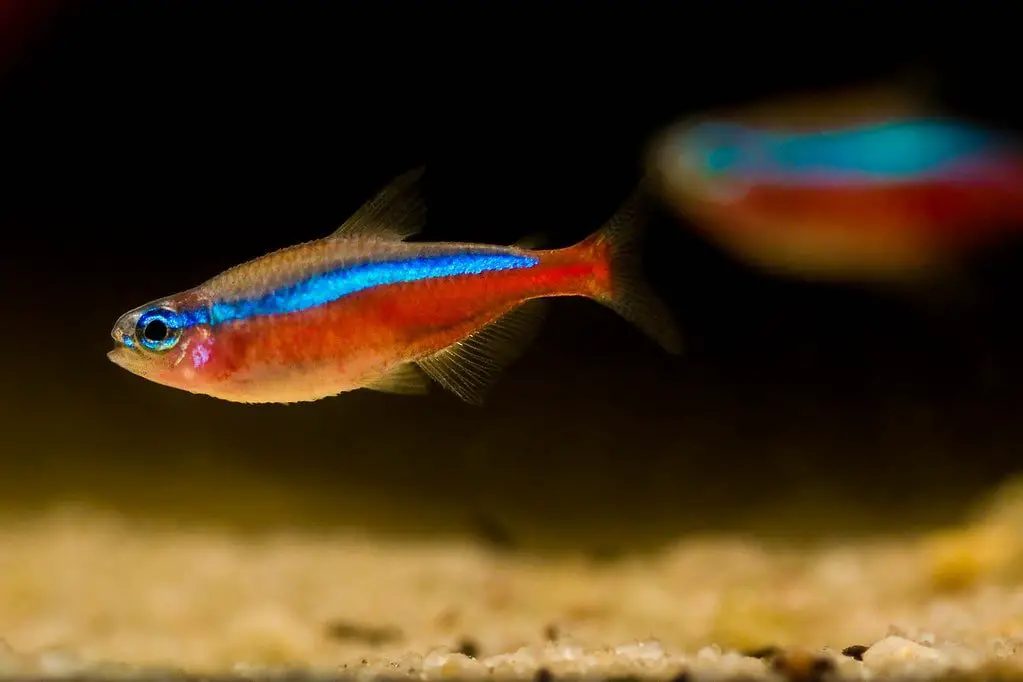
People are often confused between red neon tetras and the true neon tetras, as they appear similar in their appearance. Red neon tetras are quite longer than true neon tetras, they grow up to 2 inches. Red Neon Tetras (Cardinal tetras) have blue stripes that extend from its eye to its tail, below this stripe is a red stripe that also extends from head to tail. Here is where you can spot a difference, in true neon tetras, the red line just extends from the midbody, but it’s not the case in cardinal tetras.
These peaceful and social little fish can school with similar small fish. Its potential tank mates can be danios, rasboras, and other small similar neon tetras. They mainly swim in middle levels of water. A tank with moderate lighting, adequate swimming area, and well-planted aquarium serves perfect for red neon tetras.
A temperature of 23-27℃ is sound for red neon tetras and the pH level should not exceed 6. Also, water chemistry shouldn’t be changed frequently. The minimum tank size should be 10 gallons.
They can be purchased from$3-$4, they are slightly expensive than true Neon Tetras.
Read Full Article on Neon v/s Cardinal Tetra – The Difference
Now at this point in time, I’m not sure which fish I saw when I was seven.
Green Neon Tetras(Paracheirodon simulans)
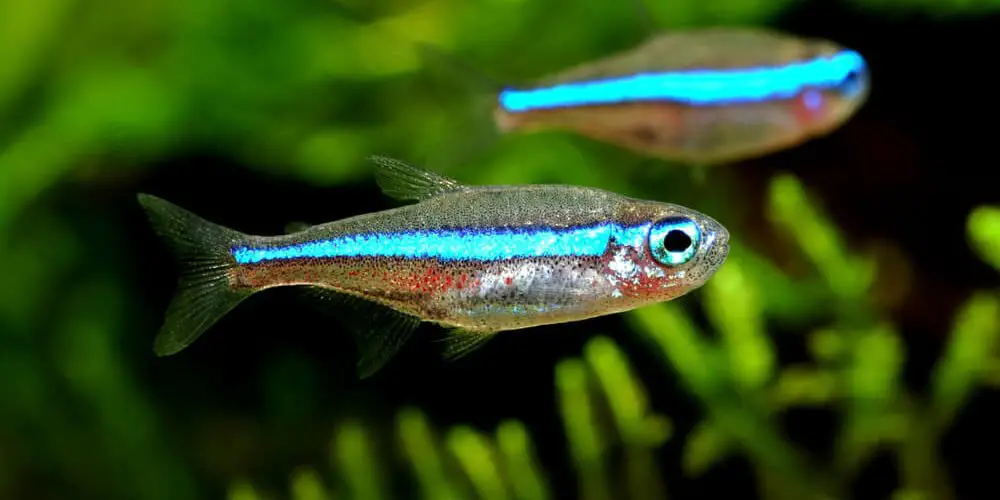
Green Neon Tetras are sometimes called blue or false neon. Wondering why it is called so? Green neon tetras are called false neon because people often get confused with their relatives: true neon tetra or cardinal neon tetra. They have faint red color on their lower body(horizontally; like neon tetras) and the upper part consists of greenish-blue color which is so beautiful. Also, their head and back are green colored.
Green Neon Tetras have a short lifespan: 2 to 3 years. Even though they are peaceful fish, they don’t make good community fish due to their tiny size. These breeds of fish are better to be kept alone and in a school of minimum 8.
These omnivores feed on some live foods like small insects, mosquito larvae, and crustaceans. They live in temperatures of 24-35℃. The favorable pH level is 3-6.5.
They cost around $4-$7.
Conclusion-Is Neon Tetra Worth It?
Watching these peaceful, vibrant and enchanting little fish is a pleasure to the human eyes. These tiny colorful fish always steal the show. They are easy to care and most importantly they make the aquarium so lively! Different types of Neon Tetras flaunt their different colors. There is no doubt Neon Tetras are so popular all over the world. If you don’t have one, hurry up and bring a school of Tetras now!!, not because they are popular because they are definitely worth your time, money, and effort.
FAQ’s
Do Neon Tetras die easily?
Even though Neon Tetras are easy to keep, there can be two reasons why neon tetras die easily:
-water parameters
-security
Neon Tetras are sensitive to water parameters. They cannot resist sudden changes in pH and acidic levels. Just lower your pH and make sure the temperature is not too cold.
Since Neon Tetras are shoaling fish, they can’t live in isolation. Keep them in schools(don’t just keep 2 fish, in a 10-gallon tank) at least 6 in a tank.
Is Neon Tetra Disease Contagious To Others?
Yes, Neon Tetra Disease is highly contagious to other fish in the aquarium. So, as soon as you spot a Neon Tetra with the disease, immediately shift that fish in another tank so that it doesn’t affect other fish and degrade the tank environment.
Can Humans Get Neon Tetra Disease?
No, humans are not prone to Neon Tetra Disease, it can spread to the other fish in the aquarium if the infected tetra is not quarantined as soon as possible.
Can I Mix Neon Tetras And Cardinal Tetras In A Community Aquarium?
Yes, you can keep these small, peaceful tetras like neon tetra, cardinal tetra, and glowlight tetras together. They can all shoal together.
How Often Should I Feed My Tetras?
Tetras should be fed two to four times a day. Generally, feeding adult Tetras twice a day is enough.
Tetras in their natural habitat, consume often, rather than consuming a lot at once. So, using this logic, some aquarists even feed them 4 times a day. But if you are doing so, the food you give each time shouldn’t be large, it should just last 1-2 minutes.
Read Full Article On Tetra Fish Diet | What do Tetra Fish Eat: A Complete Guide
Also Read:
4 Step Process on How To Keep Tetra Fish Happy And Healthy,
Maintain Tetra Fish Tank Temperature Without Heater | Power Outage,
The Lifespan of Neon Tetra – How Long Does a Neon Tetra Live For?,
How Long Can Neon Tetras Live Without Food,
Do Tetra Fish Eat Shrimp? Do you Need To Worry?
